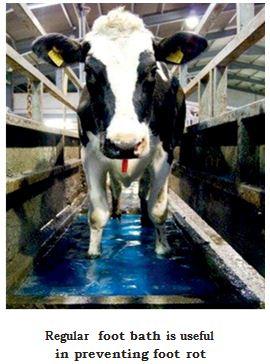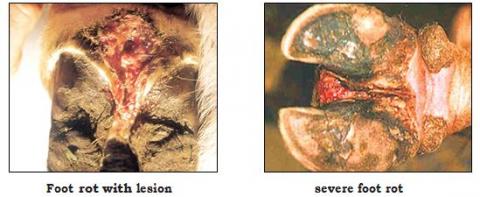
- Foot rot is a bacterial infection which is of great economic importance for dairying.
- The incidence varies according to weather, season of year, grazing periods, housing system, type of flooring etc.
- Stony ground, sharp gravel and pasturing on coarse stubble also predispose to the condition.
SYMPTOMS
- Fever and anorexia.
- Reduced milk yield.
- Swelling of inter-digital space.
- Foul smell from lesion.
- Severe lameness -Animal holds leg in air to relieve pressure.
- Hind feet are affected most often and cattle tend to stand and walk on their toes.
PREVENTION AND TREATMENT
- Remove sources of injury and keep feet dry and clean.
- Animals that are actively shedding infectious organisms should be isolated until signs of lameness have disappeared.
- Steps should be taken to ensure that areas around drinking troughs, gateways, and tracks are adequately drained.
- Preventive use of a footbath with an astringent and antiseptic solution eg. copper sulphate
- 5% & zinc sulphate 10%, gives good results.
- Systemic therapy is more important than topical treatment.
- Prompt diagnosis and initiation of parenteral antimicrobial therapy are essential to achieve a satisfactory response.
- If improvement is not evident within three to four days, it may mean the infection has invaded the deeper tissues.
- Contact a veterinarian immediately on observing the above symptoms.
Proper foot care is very important

